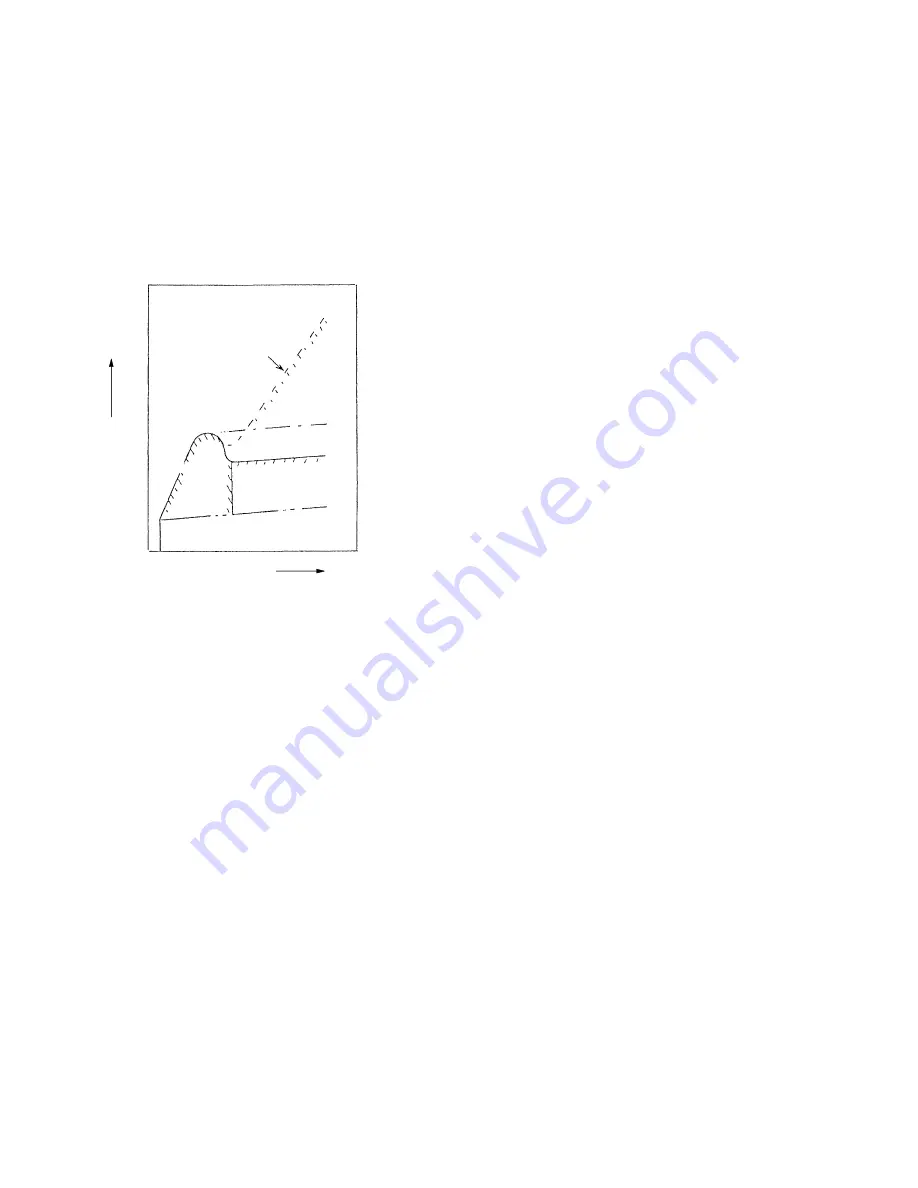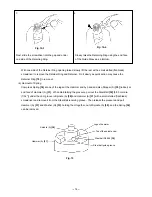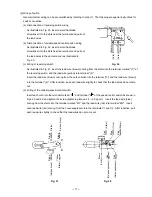
--- 2 ---
In Fig. 2, the solid line indicates the screw tightening load
applied with the impact mechanism, and the broken line a
typical load required with the conventional claw clutch system.
As the screw is tightened, tightening torque rises with the
screw's pushing into the work. Increasing downward pressure
is required when the screw slips off the tape because, on the
one hand, the clutch cannot be disengaged without such force
and on the other hand, the bit and the screw cannot be
separated apart otherwise. Both could be reasons for
incomplete driving when insufficient pressure is applied.
First referring to the claw clutch system, since the clutch
disengaging torque is strong, increasing pressure must be
applied to the screw as it is pushed in, because the clutch
claws would otherwise disengage, making further screw
tightening impossible. As a result, the required force goes on
rising, as indicated by the dotted line, until screw tightening is
finished.
Screw position
Load
4-1. Selling Point Descriptions
(1) An impact mechanism that allows screw tightening with a smaller thrust, plus our unique collated screw feed
attachment
The WF 4V employs an impact mechanism which is capable of tightening screws with a smaller thrust than
with the claw clutch system used for competitors' screwdrivers. The way it works is schematically illustrated
in Fig. 2.
With the impact system, on the contrary, it is sufficient to apply only enough force to keep the bit and screw
together, because hammering impact provides the necessary torque as the tightening torque increases, with
no need for the operator to increase pressure against the workpiece. The load indicated by solid line in Fig. 2
should be enough for optimum tightening. However, the actual load required will be such as indicated by the
chain line in Fig. 2 because it is very difficult for operators to take the force off as soon as the screw slips off
the tape.
(2) The WF 4V can be used as an impact screwdriver by removing the collated screw feed attachment:
For re-tightening jobs or other operations
Spring load
Pressure force of claw
clutch system
Pressure force of
impact mechanism
Slipping force
of tape
Fig. 2






































